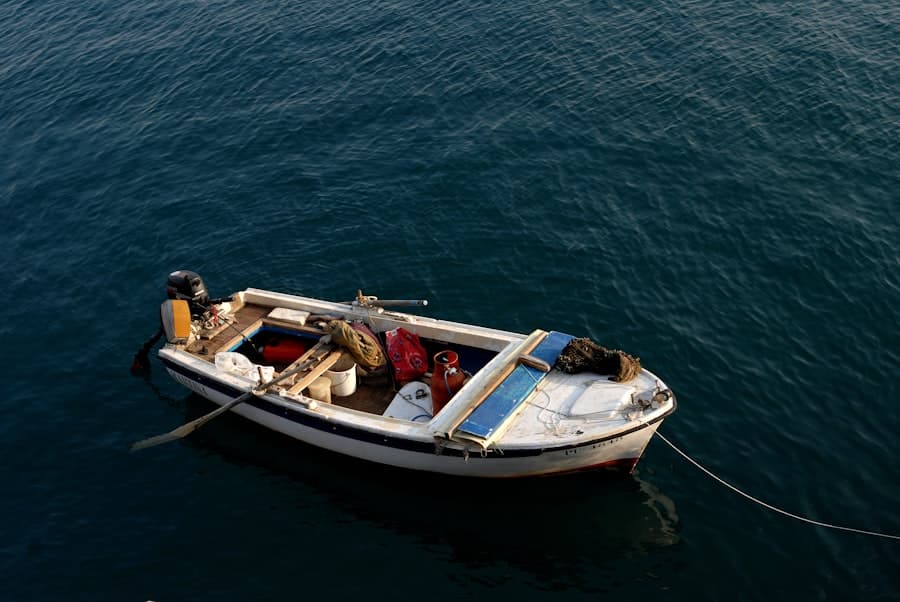The intersection of artificial intelligence (AI) and sustainable fishing practices represents a transformative approach to addressing the challenges faced by marine ecosystems. As global fish populations dwindle due to overfishing, habitat destruction, and climate change, the need for innovative solutions has never been more pressing. AI technologies offer unprecedented opportunities to enhance the management of fisheries, ensuring that fishing practices are not only economically viable but also ecologically responsible.
By leveraging data analytics, machine learning, and predictive modeling, stakeholders in the fishing industry can make informed decisions that promote sustainability while maximizing yield. The integration of AI into sustainable fishing practices is not merely a technological advancement; it signifies a paradigm shift in how we understand and interact with marine environments. Traditional fishing methods often rely on outdated data and anecdotal evidence, leading to inefficient practices that can exacerbate the decline of fish stocks.
In contrast, AI provides a robust framework for real-time monitoring and analysis, enabling fishery managers to adapt their strategies based on empirical evidence.
Key Takeaways
- AI has the potential to revolutionize sustainable fishing practices by improving monitoring, tracking, and management of fish populations.
- AI technology can accurately identify and prevent overfishing by analyzing data and providing real-time insights to fisheries management.
- Implementing AI for efficient and selective fishing techniques can help reduce bycatch and minimize the impact on non-target species.
- AI-driven solutions can play a crucial role in minimizing bycatch and protecting endangered species by enabling more precise and targeted fishing practices.
- Utilizing AI for predicting and managing ocean ecosystems can help in making informed decisions for sustainable fishing and conservation efforts.
Monitoring and Tracking Fish Populations with AI
One of the most significant applications of AI in sustainable fishing is its ability to monitor and track fish populations with remarkable precision. Advanced algorithms can analyze vast amounts of data collected from various sources, including satellite imagery, underwater drones, and acoustic sensors. For instance, researchers have developed AI systems that utilize machine learning to process sonar data, allowing them to identify species composition and abundance in specific areas.
This capability not only enhances our understanding of fish populations but also informs management decisions regarding catch limits and seasonal closures. Moreover, AI-driven monitoring systems can provide real-time insights into fish behavior and migration patterns. By analyzing historical data alongside current environmental conditions, these systems can predict where fish are likely to congregate at different times of the year.
This predictive capability is invaluable for fishery managers who need to allocate resources effectively and ensure that fishing efforts are concentrated in areas where stocks are healthy. For example, the use of AI in tracking the movements of Atlantic bluefin tuna has led to more effective conservation measures, allowing fisheries to adapt their practices based on the latest data.
AI Technology for Identifying and Preventing Overfishing
Overfishing remains one of the most critical threats to marine biodiversity, with many species facing extinction due to unsustainable harvesting practices. AI technology plays a pivotal role in identifying overfishing trends and implementing preventive measures. By analyzing historical catch data alongside environmental variables such as water temperature and salinity, AI algorithms can detect patterns that indicate overfishing is occurring or is likely to occur in the future.
This proactive approach allows fisheries to adjust their practices before stocks are severely depleted. In addition to predictive analytics, AI can also facilitate compliance monitoring by analyzing data from fishing vessels in real-time. For instance, satellite-based monitoring systems equipped with AI can track the movements of fishing boats, ensuring they adhere to designated fishing zones and quotas.
This technology not only deters illegal fishing activities but also promotes transparency within the industry. Countries like Norway have successfully implemented such systems, resulting in a significant reduction in illegal catches and a more sustainable fishing environment.
Implementing AI for Efficient and Selective Fishing Techniques
The implementation of AI in fishing techniques has the potential to revolutionize how fish are caught while minimizing environmental impact. Traditional fishing methods often result in high levels of bycatch—unintended species caught alongside target fish—which can devastate non-target populations. AI technologies can enhance selectivity by providing fishermen with tools that help them identify target species more accurately.
For example, computer vision systems can analyze images captured by underwater cameras to distinguish between different fish species, allowing fishermen to target specific populations while avoiding others. Furthermore, AI can optimize fishing gear design and deployment strategies. By analyzing data on fish behavior and environmental conditions, AI algorithms can recommend the most effective gear types and configurations for specific fishing scenarios.
This level of precision not only increases catch efficiency but also reduces the ecological footprint of fishing operations.
AI-driven Solutions for Minimizing Bycatch and Protecting Endangered Species
Minimizing bycatch is a critical component of sustainable fishing practices, particularly when it comes to protecting endangered species. AI-driven solutions are emerging as powerful tools for addressing this issue. Machine learning algorithms can analyze vast datasets from various sources—such as historical catch records, environmental conditions, and species distribution models—to identify high-risk areas where bycatch is likely to occur.
This information enables fishery managers to implement targeted measures that reduce bycatch rates. One innovative approach involves the use of smart nets equipped with sensors and cameras that utilize AI for real-time species identification. These nets can automatically release non-target species back into the water unharmed while retaining target fish.
Such technology has been piloted in various fisheries around the world, demonstrating significant reductions in bycatch rates. For instance, trials conducted in the Gulf of Mexico have shown that smart nets can decrease bycatch of juvenile red snapper by up to 90%, allowing populations to recover while still supporting local fisheries.
Utilizing AI for Predicting and Managing Ocean Ecosystems
The health of ocean ecosystems is intricately linked to sustainable fishing practices, making it essential to understand how various factors interact within these environments. AI technologies are increasingly being utilized to predict changes in ocean ecosystems and inform management strategies accordingly. By integrating data from multiple sources—such as oceanographic sensors, satellite imagery, and ecological models—AI can provide insights into how climate change, pollution, and human activity impact marine life.
For example, researchers have developed AI models that predict shifts in fish populations due to changing ocean temperatures and currents. These models allow fisheries to anticipate changes in stock availability and adjust their practices accordingly. Additionally, AI can help identify critical habitats for spawning and nursery grounds, enabling targeted conservation efforts that protect these vital areas from degradation.
The ability to forecast ecosystem changes empowers stakeholders to make proactive decisions that safeguard marine biodiversity while supporting sustainable fishing practices.
Challenges and Limitations of AI in Sustainable Fishing Practices
Despite the promising potential of AI in sustainable fishing practices, several challenges and limitations must be addressed for widespread adoption. One significant hurdle is the availability and quality of data required for effective AI modeling. Many fisheries lack comprehensive datasets on fish populations, environmental conditions, and fishing activities, which hampers the development of accurate predictive models.
Furthermore, data collection methods may vary significantly across regions, leading to inconsistencies that complicate analysis. Another challenge lies in the integration of AI technologies into existing fishing practices. Fishermen may be resistant to adopting new technologies due to concerns about costs or a lack of understanding of how these tools can benefit their operations.
Additionally, regulatory frameworks may not yet be equipped to accommodate AI-driven solutions, creating barriers to implementation. Overcoming these challenges will require collaboration among stakeholders—including governments, researchers, and industry representatives—to develop standardized data collection methods and promote education about the benefits of AI in sustainable fishing.
Future Prospects and Innovations in AI for Sustainable Fishing Practices
The future of AI in sustainable fishing practices holds immense promise as technological advancements continue to evolve. Innovations such as autonomous underwater vehicles (AUVs) equipped with advanced sensors and AI capabilities are poised to revolutionize data collection efforts in marine environments. These AUVs can conduct extensive surveys of fish populations and habitats without disturbing ecosystems, providing valuable insights for fisheries management.
Moreover, as machine learning algorithms become increasingly sophisticated, they will enable more accurate predictions regarding fish behavior and ecosystem dynamics. This could lead to the development of adaptive management strategies that respond dynamically to changing conditions in real-time. The integration of blockchain technology with AI could also enhance traceability within supply chains, ensuring that consumers have access to sustainably sourced seafood while promoting accountability among fisheries.
As we look ahead, it is clear that the synergy between AI technology and sustainable fishing practices will play a crucial role in shaping the future of our oceans. By harnessing the power of data-driven insights and innovative solutions, we can work towards a more sustainable future for both marine ecosystems and the communities that depend on them for their livelihoods.
In a related article, “Discover the Best Laptops for Blender in 2023: Top Picks and Reviews,” the importance of using advanced technology to enhance productivity and efficiency is highlighted. Just as AI is revolutionizing sustainable fishing practices, powerful laptops equipped with cutting-edge software like Blender are essential tools for professionals in the design and animation industry. By staying up to date with the latest technology, individuals can maximize their creative potential and achieve outstanding results in their work. To learn more about the best laptops for Blender in 2023, check out the article here.
FAQs
What is AI?
AI, or artificial intelligence, refers to the simulation of human intelligence in machines that are programmed to think and act like humans. This includes tasks such as learning, problem-solving, and decision-making.
What are sustainable fishing practices?
Sustainable fishing practices are methods of catching and harvesting fish that can be maintained over the long term without compromising the health of the fish population or the marine ecosystem. This includes techniques that minimize bycatch, protect endangered species, and reduce habitat damage.
How can AI be used in sustainable fishing practices?
AI can be used in sustainable fishing practices in a variety of ways, including monitoring and managing fish populations, predicting fish behavior and migration patterns, optimizing fishing routes and schedules, and reducing bycatch through the use of advanced sensors and data analysis.
What are the benefits of using AI in sustainable fishing practices?
The use of AI in sustainable fishing practices can help improve the efficiency and effectiveness of fishing operations, reduce the impact on marine ecosystems, and ensure the long-term viability of fish populations. This can lead to more sustainable and responsible fishing practices.
Are there any challenges or limitations to using AI in sustainable fishing practices?
Some challenges and limitations to using AI in sustainable fishing practices include the high cost of implementing AI technology, the need for specialized training and expertise, and potential concerns about data privacy and security. Additionally, the effectiveness of AI in sustainable fishing practices may be limited by the availability and quality of data.



